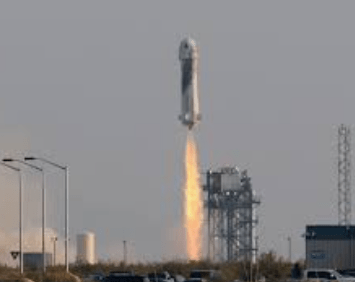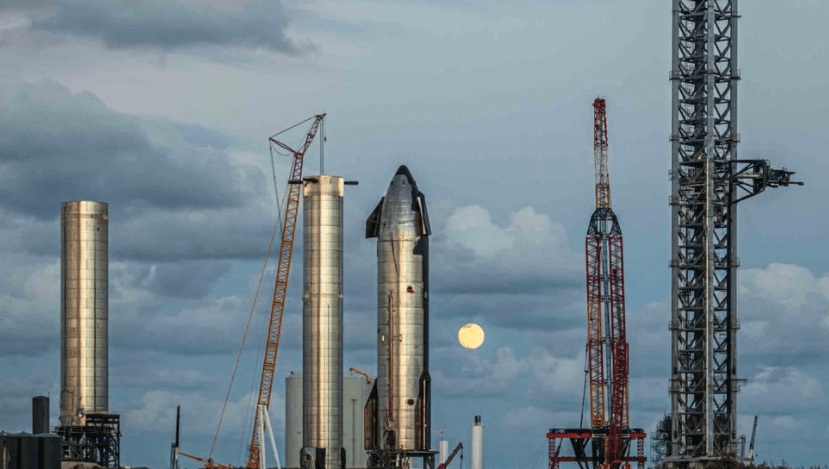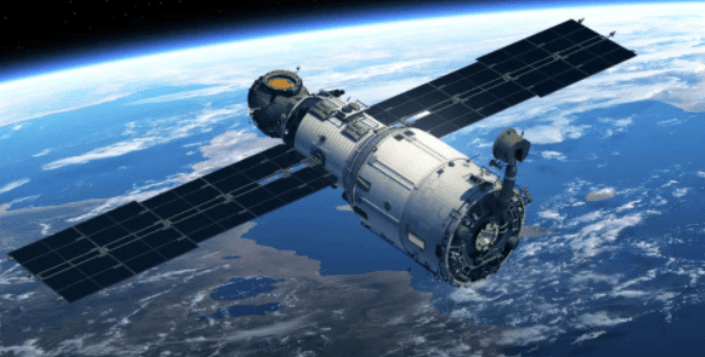By Cain O’Mahony
Never mind ‘Captain Kirk’ finally making it into space. The truth is, it’s beginning to get very crowded up there. 2021 has been the year that more objects have been launched into space than ever before – 1,400 so far, and that figure is just up to September.
This is because the commercialisation of space has really taken off (if you’ll pardon the pun). Discounting defence and research craft, currently there are 1,211 communication satellites, a further 884 for meteorology (both state-owned and commercial), and 148 for Global Navigation Satellite Systems. This compares to 2016, when there were 700 satellites supporting communications and a further 106 providing navigation services. But with the demand for internet services continuing to grow, the numbers are rapidly increasing exponentially.
This ‘space rush’ is being driven by internet technology and the digital revolution, which in turn have made satellites smaller and lighter and easier to deliver. The main drive, though, is that the giant corporations can see there are billions to be made. To give an indication of the sort of eye-watering profits that can be made, the contract from NASA to deliver cargo to the International Space Station, won by the Orbital Services Corporation, was worth $1.9 billion.
Like the railroad barons in the Wild West
That’s why the big corporations are looking to the stars. The main players beside OSC, are Lockheed Martin who have traditionally serviced the NASA projects; the United Launch Alliance, a consortium of Lockheed and Boeing; Sierra Nevada Space Systems, the leader in producing small satellites; Jeff Bezos’s Blue Origin; and Elon Musk’s SpaceX – 358 of the current number of communications satellites are his.
There’s also Branson’s Virgin Galactic, which is focussing of space-tourism. Book early to guarantee a seat, 600 of the super-rich already have and places are only £250,000 each.

The other main reason for the space scramble – similar to the railroad barons in the old Wild West – is that space is unregulated. Former UN treaties and protocols were designed to decrease Cold War militarism, not regulate business. The last one that did lay down some rules at least, was the UN’s ‘Principles Governing the Use by States of Artificial Satellites for International Direct Television Broadcasting’ in 1982. But as can be seen, it is – like all UN conventions on space – aimed at state players, not commercial corporations.
In terms of health and safety, there is the United Nations’ ‘Convention on International Liability for Damage Caused by Space Objects’, first published in 1972, signed up to by 22 countries. The Convention says that whichever country launches an object is financially liable for any damage it causes elsewhere if something goes wrong. There is much debate however, as to whether the Convention is still valid in today’s world.
Global multi-national companies
With the commercialisation of the space industry, global companies ‘hire-in’ the launching sites all over the world. The “launch country” could be held responsible under the UN Convention, while the global multi-national company responsible for the faulty technology walks away scot-free. Equally, satellites can now be launched from a converted, high altitude Airbus – if done so by a commercial global company from the air, which national state is responsible?
In fact, where legality has been questioned, as ever under capitalism, the law is firmly on the side of the corporations. In 2019, the astronomical scientific sector was furious with Elon Musk’s SpaceX, when his second batch of Starlink satellites began to interfere with their work. An astronomer at the Cerro Tololo Inter-American Observatory in Chile alerted her colleagues that a train of just 19 Starlink satellites had “heavily affected” the work of its highly-sensitive Dark Energy Camera (DECam), tasked with unravelling the nature of ‘dark energy.’
Now many professional astronomers are concerned that the full Starlink constellation — SpaceX has licenses from the US Federal Communications Commission for up to 12,000 satellites — could interfere with ground-based astronomy. But in the US, they have found they can do nothing about it.
In the US there are no regulations that apply to the appearance of satellites in the night sky, beyond a prohibition in federal law against “advertising in outer space that is capable of being recognized by a human being on the surface of the Earth without the aid of a telescope or other technological device” (that would have to be a BIG satellite…). Simply being able to see a satellite from the ground, legal experts say, does not qualify as obtrusive.

In the US, the Starlink satellites are licensed by the Federal Communications Commission, and their launches on Falcon 9 rockets are licensed by the Federal Aviation Administration. Neither licensing process explicitly includes a consideration of the impact of satellites on the night sky.
Spent rocket cases and defunct satellites
It is not just the scientific environment that is being disrupted by this new pollution, but the physical environment too. It is now estimated that there are 22,000 spent rocket cases and defunct satellites, as well as half a million ‘space crumbs’ of small debris whizzing around the earth. Space is beginning to get cluttered, and concerns are growing of some future major ‘trash crash’, as NASA call it.
So far, collisions are few and far between, given the enormity of space. But one such incident occurred in February 2009, when an active US satellite collided with a defunct Russian one, shattering them both into thousands of pieces.
Also, of course, what goes up must come down, eventually. Fortunately, most debris burns up on re-entry, but even so, the European Space Agency estimates that since the space race began, 15,000 tons of man-made space objects have re-entered the earth’s atmosphere. Fortunately, there is only one recorded case of a piece of space junk striking anyone. In 1997, a woman in Turley, Oklahoma, was struck on the shoulder by a small, lightweight object, which turned out to be a fragment of a Delta 2 rocket booster.
Falling military hardware can be more worrying, as it may be radioactive. One such incident was in 1978 when a Soviet Navy satellite, Cosmos 954, went out of control and re-entered the earth’s atmosphere over Canada. It contained a compact nuclear reactor. Fortunately, it came to ground in wilderness in the Canadian Arctic, but it still left radioactive debris spread across a wide area.
In 2008, a USA military reconnaissance satellite containing various hazardous materials, such as highly toxic Beryllium and Hydrazine, began to enter a ‘deteriorating orbit’. The problem with hi-tech military satellites is that they are ‘radiation hardened’ to protect them from being knocked out by a nuclear blast in space. That being the case, they are less likely to completely degrade on re-entry, unlike flimsier commercial satellites. Fortunately, the US launched a modified Surface-to-Air missile that took out the rogue satellite 133 miles above the Pacific Ocean.
Corporations rushing to beat one another
The key word to all the above is of course ‘fortunately…’ With Elon Musk’s SpaceX alone planning to put a total of 42,000 satellites into orbit, the law of probability can only increase for the possibility of ‘trash crashes’.
What is more worrying is that the big corporations are rushing to beat each other for dominance of the internet satellite service on which we will all depend, yet have developed little understanding or research into what is called ‘space weather’. While the media focussed on the ‘Captain Kirk’ publicity stunt, little attention was paid to a UK government report issued in September, called the UK Severe Space Weather Preparedness Strategy.

Space weather has been with us since the birth of our planet. But obviously we didn’t notice it until we went electric and world telecommunications began around 150 years ago; we put up our first satellite only 64 years ago.
Space weather is a collective term used to describe a range of phenomena originating from the Sun – such as Solar Flares and Coronal Mass Ejections, which can increase radiation and create geomagnetic storms – which can impact on the technology we use both in space and on Earth. In its more severe form, it can cause significant disruption to global navigation satellite systems, satellites, radio communications and on the ground, transportation networks and electricity grids.
Other CME incidents in the past 150 years
It is only in recent history that the impact of space weather has begun to be understood, and there may have been other incidents over the past 150 years or so which were not recorded as such, because there was not the knowledge to know what it was.
The first known event was in 1859: when auroras were seen around the world and those over the Rocky Mountains in the US were so bright that the glow woke gold miners, who began preparing breakfast because they thought it was morning. In 1989. a geomagnetic storm induced electric currents in transformers at the at the Hydro-Quebec power plant, melting transformer coils and causing widespread power loss in the middle of the Canadian winter.
More recently, in 2003, a geomagnetic storm disrupted satellite services, permanently damaging one of them. In the same year, space weather affected air traffic, with the loss of communications and navigation systems, while in 2017, airlines were told to avoid certain airspace regions because of the increased risk of radiation.
Cyber attacks or nuclear explosions in space
Equally, satellites are vulnerable to hostile attack, which also needs to be considered in these unstable times, whether through cyber-attacks or nuclear explosions in space which can create an electromagnetic pulse, or EMP. Security experts fear belligerent states are “…increasingly cognisant of the economic and military reliance of their adversaries on satellites, and the potential damage that electronic attack on such spacecraft could have” (International Safety & Security, Edition 6, 2017).
And this is the danger. Elon Musk says his plan is to eventually put 42,000 satellites into orbit, to ensure that every part of our planet will have decent broadband. That sounds very commendable, but it will create an over-reliance on one form of technology. The digital revolution is still sweeping the planet, not just giving us improved communications, but greater reliance on the ‘Internet of Things’, from controlling our heating through to Telemedicine.
What will happen when a solar flare takes out the satellites, leaving us having a collective nervous breakdown because we can’t turn on our smart phones or turn off the heating? When businesses seize up because there is no connectivity? Or the surgeon conducting a remote operation suddenly goes off line? It is this vulnerability that prompted even Boris Johnson’s government to think the worse and publish a ‘space weather’ strategy.
We have seen all these drivers before. If capitalism sees the chance of profit, they go for it, regardless of the consequences. Lead in petrol? Asbestos? Plastic cladding for tower blocks? “Don’t worry about it, as long as we make our profits”. As ever with capitalism, there is no planning, no consequence management and if they can get away with it, even less regulation.
See also: Space the Final Junkyard, here



